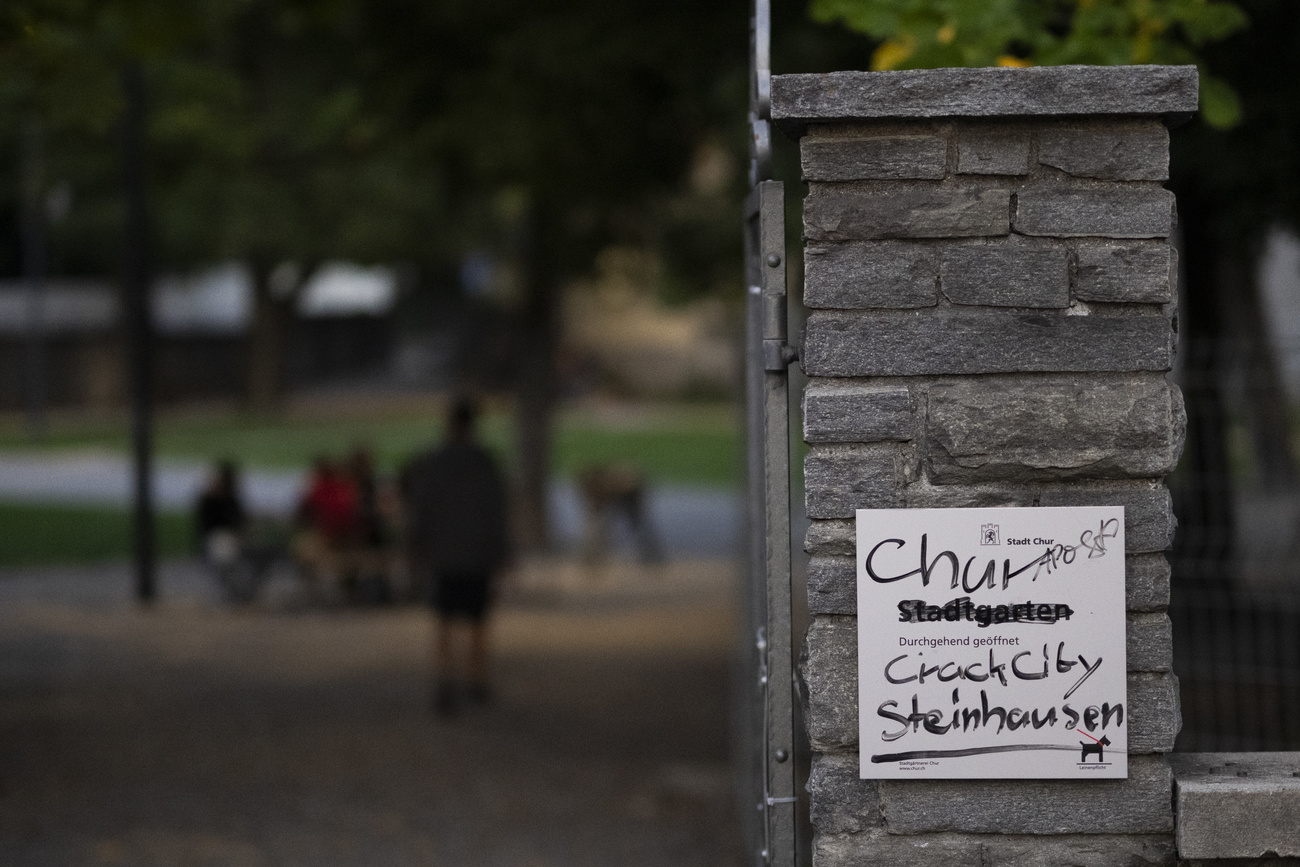Lüthi goes on show

Art is the better life, according to Urs Lüthi, a Swiss artist who has spent 30 years redefining the self-portrait. A retrospective of his work is on show in Geneva.
Lüthi, born 55 years ago in Kriens, in canton Lucerne, has spent his career searching for and questioning the nature of identity. The subject of his work and his principal material have often been himself.
The exhibition “Urs Lüthi: Art is the Better Life 1970-2002”, which has just opened at Geneva’s Musée Rath, traces not only the artist’s work over a period of 32 years, but also Lüthi himself – from a gaunt androgenous youth, when he was associated with the body art movement, to a portly, bald, middle-aged man.
Some of Lüthi’s most thought-provoking and challenging works are on display, from the intensely moving “The Numbergirl” – a collection of 20 black-and-white self-portrait photographs, in which the artist’s appearance and expression evolve – to a series of nine videos showing the artist ironically carrying out a series of everyday chores.
Subverting
Although these photographed self-portraits – often printed on to canvas – are among Lüthi’s best-known works, the exhibition also contains paintings, sculptures, pop art and installations.
More recently, Lüthi’s work has become a glossy pastiche of advertising. His work carries slogans that subvert global leisure culture and the banalities of everyday life. A collection of Frisbees contains expressions like: “Act for one hour like the opposite sex”, “Smile deliberately to strangers” or “Waste your feelings”.
Where in his early career, Lüthi had a very personal response to the question of identity, now he is looking for more universal answers. In the 1970s, the artist in the picture changed constantly. Today, Lüthi’s bald head has become his trademark.
“Lüthi’s artistic reasoning has evolved in the most coherent way,” says Rainer Michael Mason, the director of Geneva’s engravings museum and curator of the Lüthi exhibition. “His work is a reflection on the body, time, life and death.”
Lüthi has had a long relationship with Geneva. He caused a storm in 1975 when he put on a “performance” at the Art and History Museum. The audience arrived to find a large sideboard. On it was a card bearing the phrase: “the artist is in the cellar”.
He was found in an old coal bunker, in the company of a bucket, a bottle of champagne and a transistor radio. The message was clear: the artist remains apart.
The exhibition runs until September 1.
by Roy Probert

In compliance with the JTI standards
More: SWI swissinfo.ch certified by the Journalism Trust Initiative








You can find an overview of ongoing debates with our journalists here . Please join us!
If you want to start a conversation about a topic raised in this article or want to report factual errors, email us at english@swissinfo.ch.